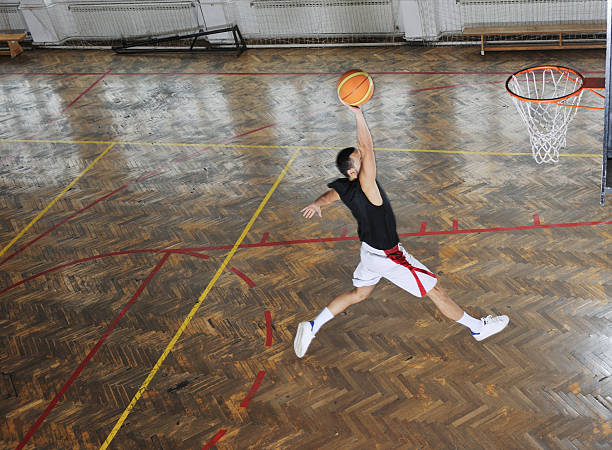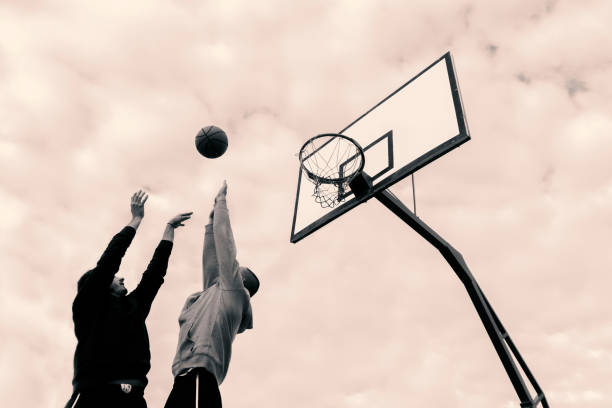Old Fashioned Basketball Attempts NYT
Old Fashioned Basketball Attempts NYT has come a long way since its inception in 1891 by Dr. James Naismith. What started as a simple game played with a peach basket has evolved into one of the most popular sports globally. Throughout its history, basketball has witnessed numerous changes in style, rules, and strategy. One of the most fascinating aspects of the game’s evolution is the transition from old-fashioned basketball attempts to the modern-day fast-paced, high-scoring spectacle we see today.
In a New York Times (NYT) analysis, the concept of “old-fashioned basketball attempts” refers to the early methods of shooting, playing, and strategizing in basketball, long before advanced analytics, high-speed play, and three-point shooting became dominant forces in the game. This article will explore the history of these old-fashioned attempts and examine how basketball has evolved over the years, as analyzed by NYT.
The Origins of Basketball
When basketball was first created, it was a simple and slow-paced game compared to what we see today. Dr. Naismith’s original rules were modest, with only 13 principles guiding the game. One of the most significant early features was that the ball had to be thrown into a peach basket mounted on the wall. After each successful shot, someone would have to retrieve the ball, as there were no holes at the bottom of the basket to let the ball fall through—hence, a rather time-consuming process.

The rules did not allow dribbling at first, and the primary method of advancing the ball was through passing. The shots were almost exclusively set shots, which involved standing still and launching the ball with precision rather than athleticism.
The Set Shot
In the early days of basketball, the most common shot was the set shot. Players would square up to the basket, plant their feet firmly on the ground, and take a stationary shot. The set shot emphasized accuracy and finesse rather than power or speed. Unlike today’s quick-release jump shots, the set shot required more deliberate preparation.
These old-fashioned basketball attempts were characterized by a slower pace of play and a focus on precision. Defenses were typically less aggressive, allowing players to take their time before attempting a shot. For many years, this method of shooting was considered the best way to score, with players aiming for high-percentage shots close to the basket.
The Two-Handed Free Throw
Another old-fashioned basketball attempt was the two-handed free throw. Unlike today’s one-handed, over-the-head free throw style, players would often shoot with both hands in a pushing motion. This method was thought to provide more control and balance, even though it would later be replaced by the more fluid one-handed technique we see today.
Players like Rick Barry later popularized the underhanded free throw, sometimes referred to as the “granny shot,” which had higher success rates but was abandoned because it looked unconventional, even though it was an effective old-fashioned attempt.
The Introduction of the Jump Shot
One of the most significant changes in basketball came with the introduction of the jump shot. While the exact origin of the jump shot is disputed, many credit Kenny Sailors, a college player from Wyoming, with popularizing the technique in the 1940s. The jump shot was a game-changer in basketball. It allowed players to elevate off the ground before releasing the ball, making it harder for defenders to block the shot.
The jump shot was a major shift from the old-fashioned set shots that dominated the early years of basketball. Players began to realize that by jumping, they could create more space between themselves and their defenders, leading to a higher likelihood of scoring. Over time, the jump shot became the standard for perimeter shooting, pushing the set shot into relative obscurity.
The Role of the Hook Shot
The hook shot is another example of an old-fashioned basketball attempt that has largely disappeared from the modern game. The hook shot was a specialty of players like George Mikan and Kareem Abdul-Jabbar, who famously used his “skyhook” to dominate the NBA. The hook shot involved the player turning their body sideways and shooting the ball with one hand in an arcing motion over their head.
While the hook shot was incredibly effective, especially for taller players, it has been used less frequently in recent years as basketball has shifted toward more perimeter-oriented play. In its prime, however, the hook shot was a key offensive weapon, and it remains one of the most iconic moves in the history of the sport.
The Evolution of Strategy and Play Style
In the early days of basketball, strategy revolved around controlling the ball, passing, and setting up high-percentage shots near the basket. The concept of spacing and perimeter shooting was not as prevalent as it is today. Teams would often look to slow the game down, working the ball around the court before attempting a shot.
However, as basketball grew in popularity, the pace of play began to speed up. The introduction of the shot clock in 1954 was a pivotal moment in the evolution of the game. Prior to the shot clock, teams could hold onto the ball for as long as they wanted, leading to low-scoring, slow-paced games. The shot clock forced teams to take a shot within a certain amount of time, encouraging faster and more dynamic play.
The Rise of the Fast Break
Another significant change in basketball strategy was the rise of the fast break. In the old-fashioned style of play, teams would typically walk the ball up the court and methodically set up their offense. However, as players became more athletic and the game grew faster, teams began to take advantage of transition opportunities.
The fast break allowed teams to score quickly by pushing the ball up the court before the defense could get set. This change in strategy led to higher scoring games and a more exciting style of play, which helped basketball grow in popularity during the 1960s and 1970s.
The Impact of the Three-Point Line
Perhaps the most significant change in the history of basketball was the introduction of the three-point line in the NBA in 1979. The three-point line revolutionized the game, giving players the opportunity to score from long distance and rewarding teams for spacing the floor.
Before the three-point line, most basketball attempts were taken close to the basket, and perimeter shots were considered risky. However, with the advent of the three-point line, players began to develop long-range shooting skills, and teams started to build their offenses around perimeter shooting.
The rise of analytics in recent years has only further cemented the importance of the three-point shot. Data shows that three-point shots are more efficient than mid-range shots, leading to a dramatic increase in three-point attempts in the modern game. In contrast, old-fashioned basketball attempts, such as mid-range jumpers and post-up plays, have become less common as teams prioritize efficiency.
Conclusion: From Old-Fashioned Attempts to Modern Basketball
Basketball has undergone significant transformations since its inception, with old-fashioned basketball attempts giving way to more dynamic, fast-paced, and efficient strategies. The analysis provided by the New York Times highlights the historical significance of these changes and how they have shaped the modern game.
While old-fashioned set shots, two-handed free throws, and hook shots may no longer dominate the sport, they are an important part of basketball’s rich history. The evolution of the game is a testament to the innovation and creativity of players and coaches over the years. From the slow, methodical play of the early 20th century to the high-flying dunks and long-range bombs of today, basketball continues to evolve while honoring its storied past.




